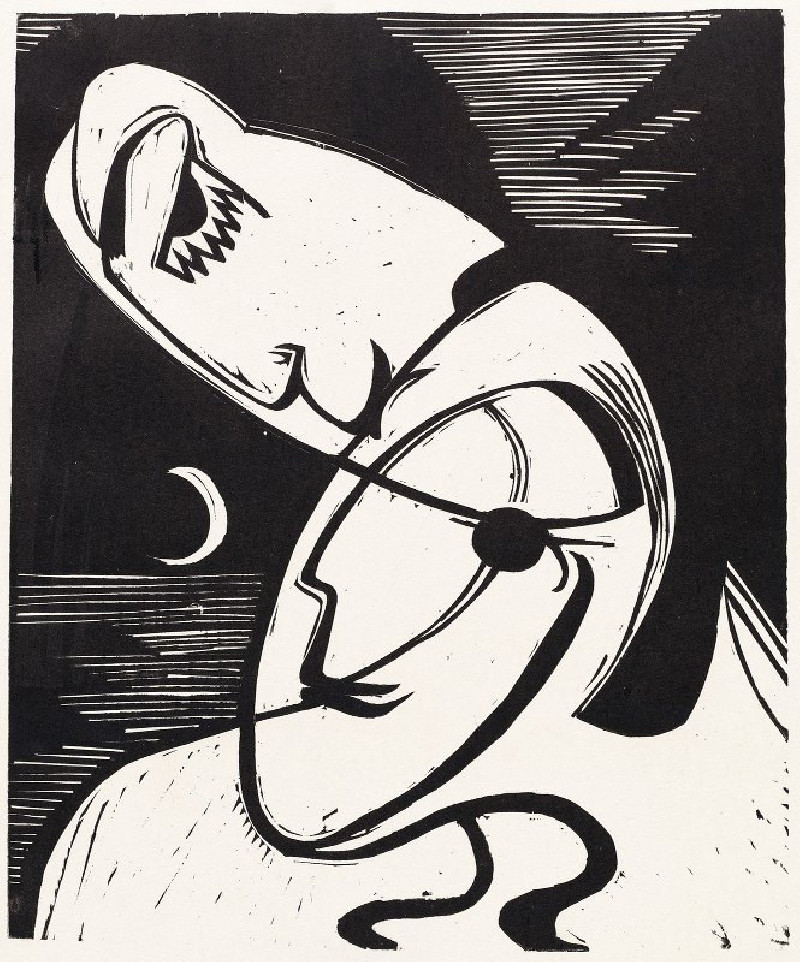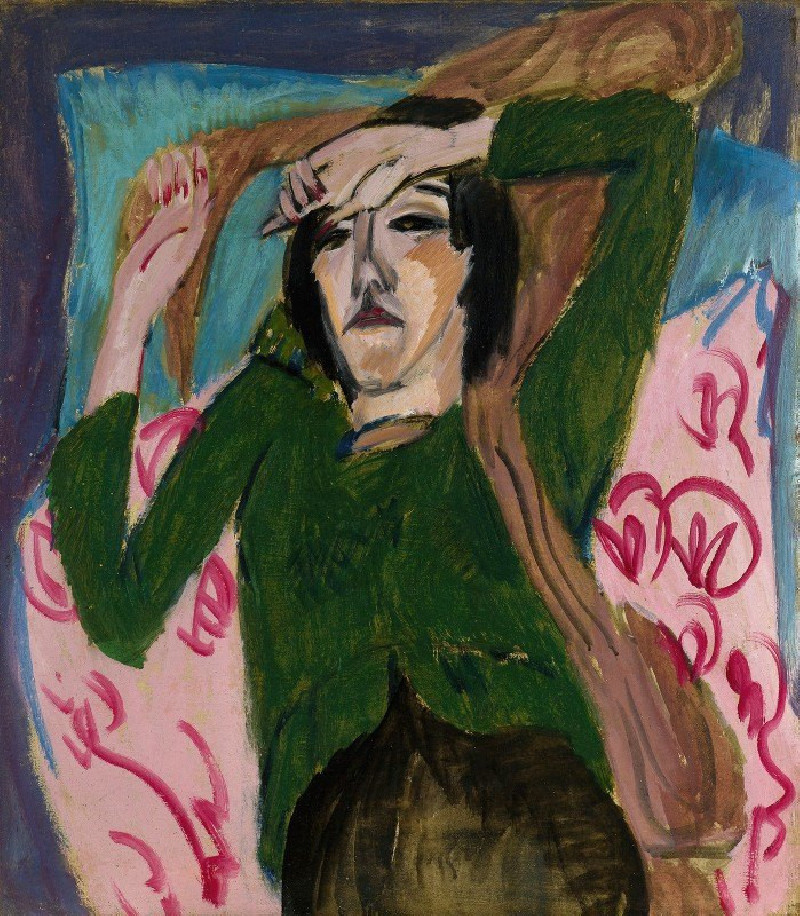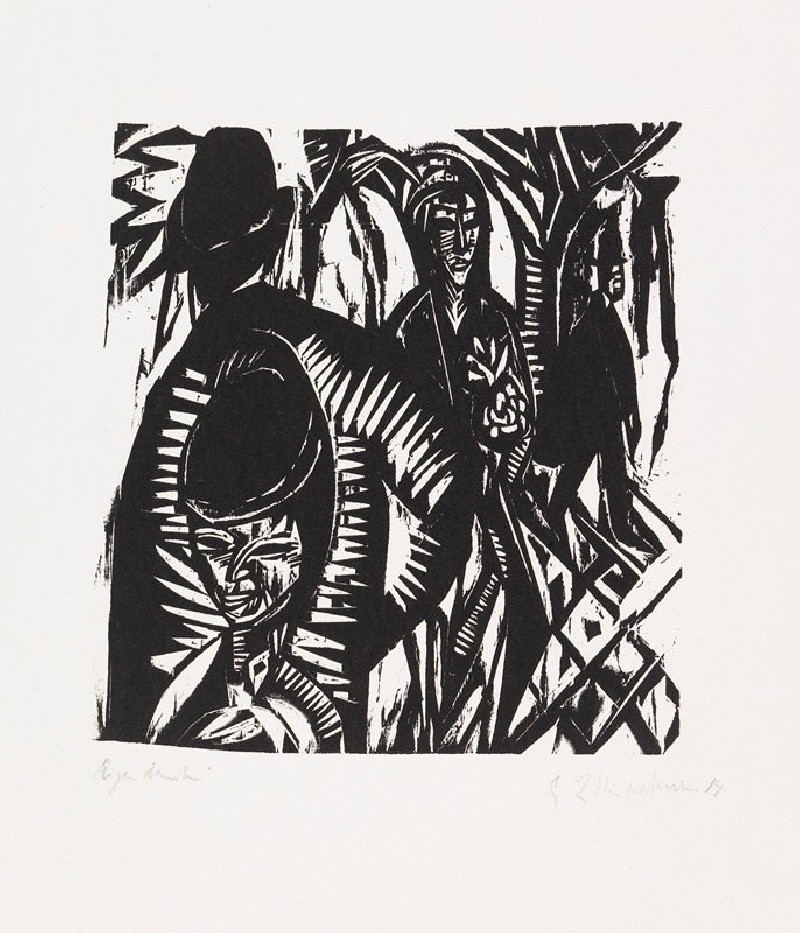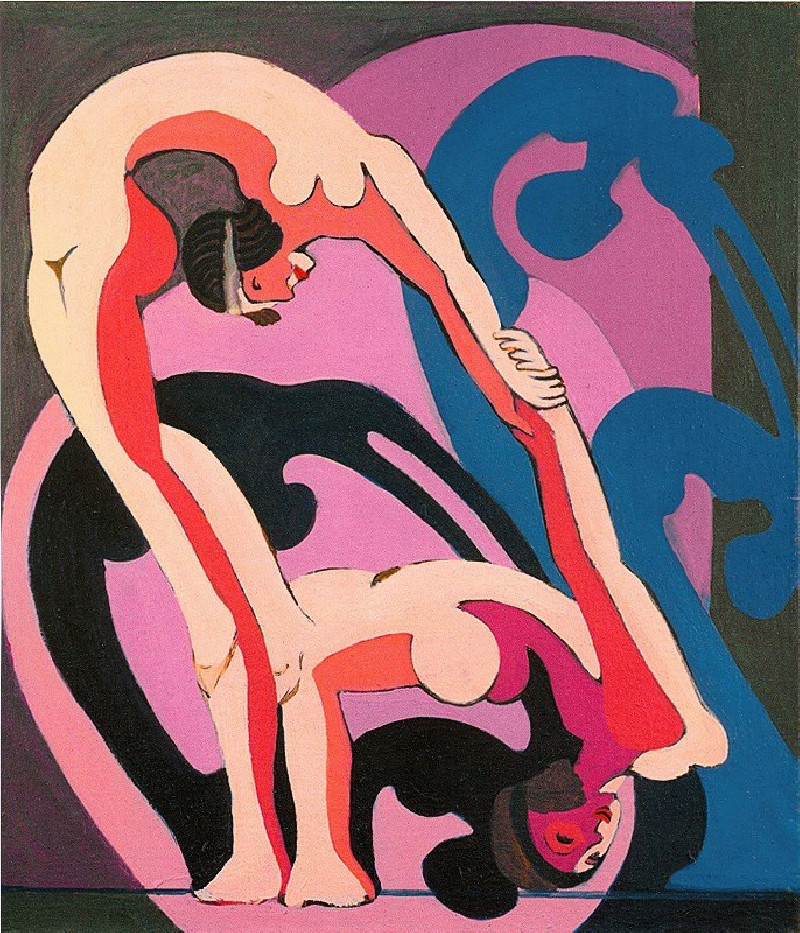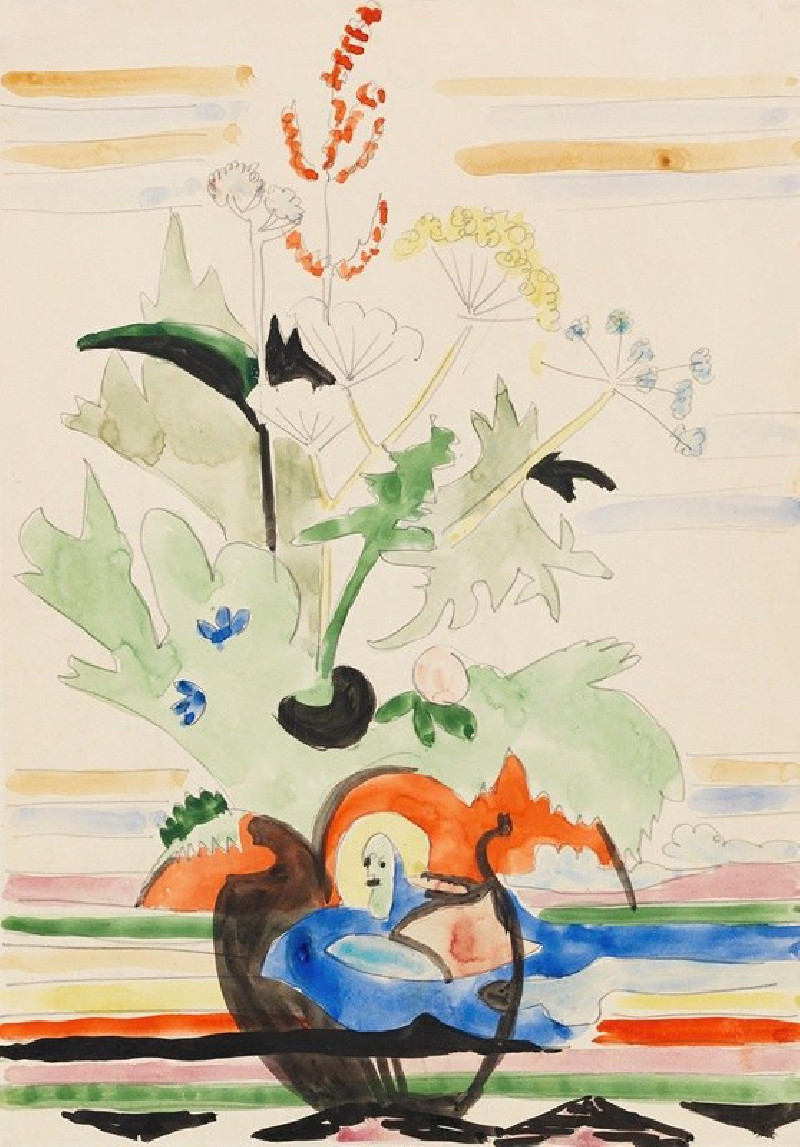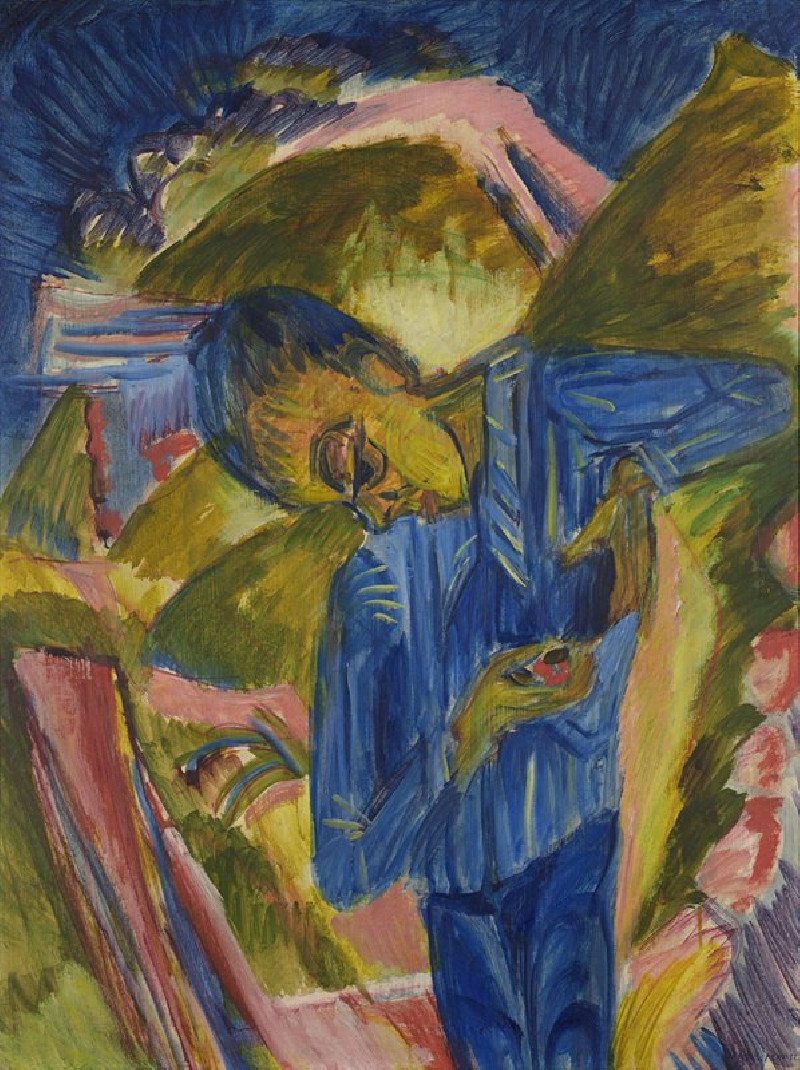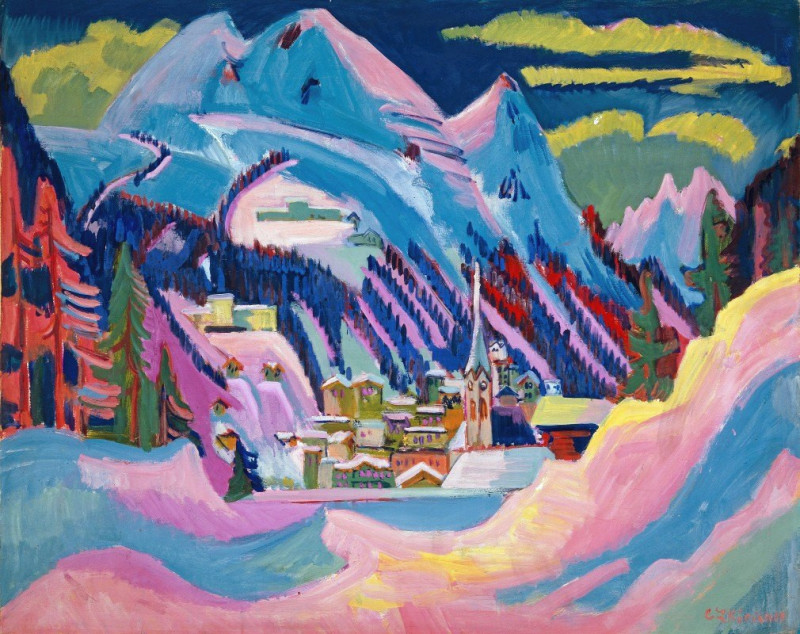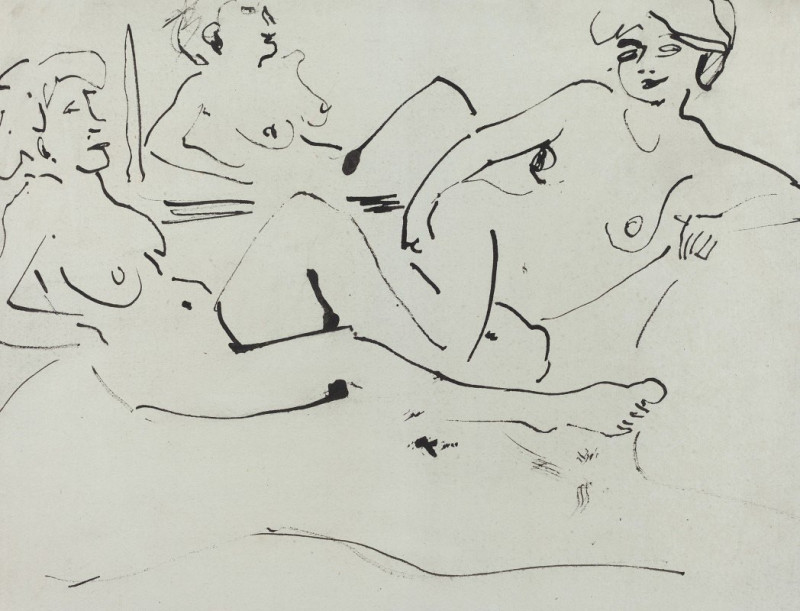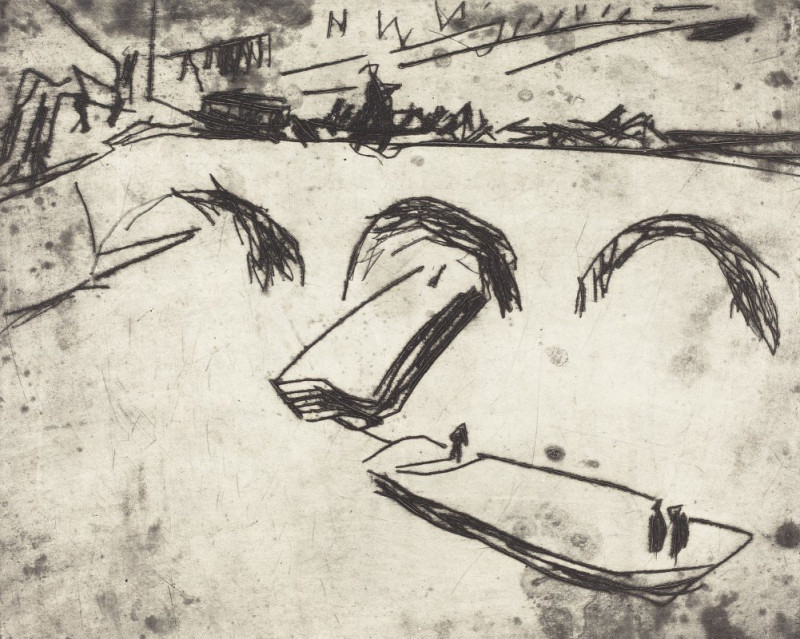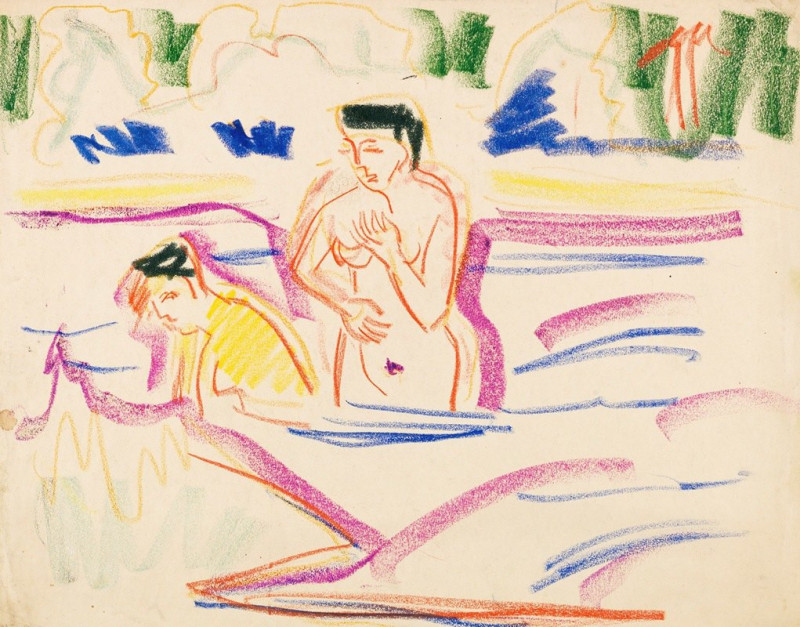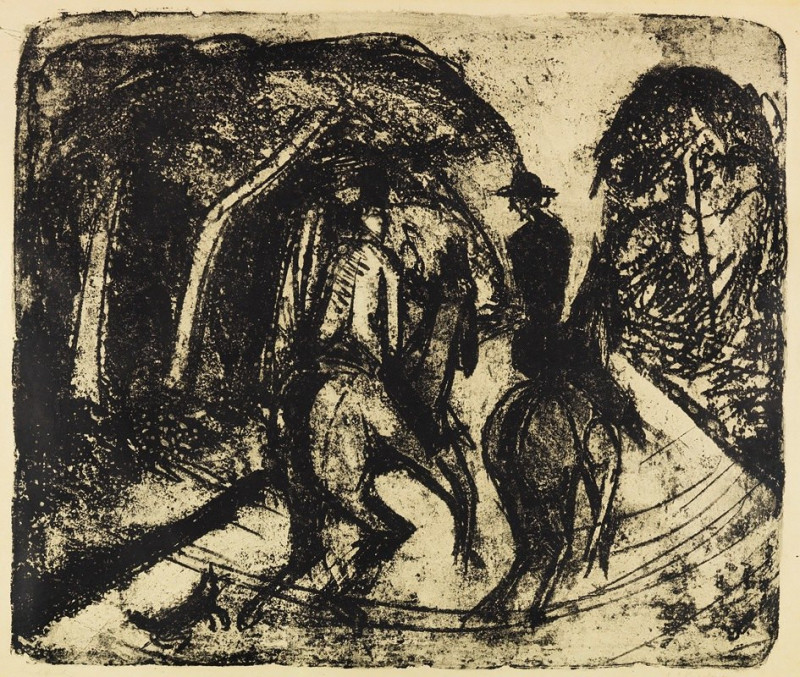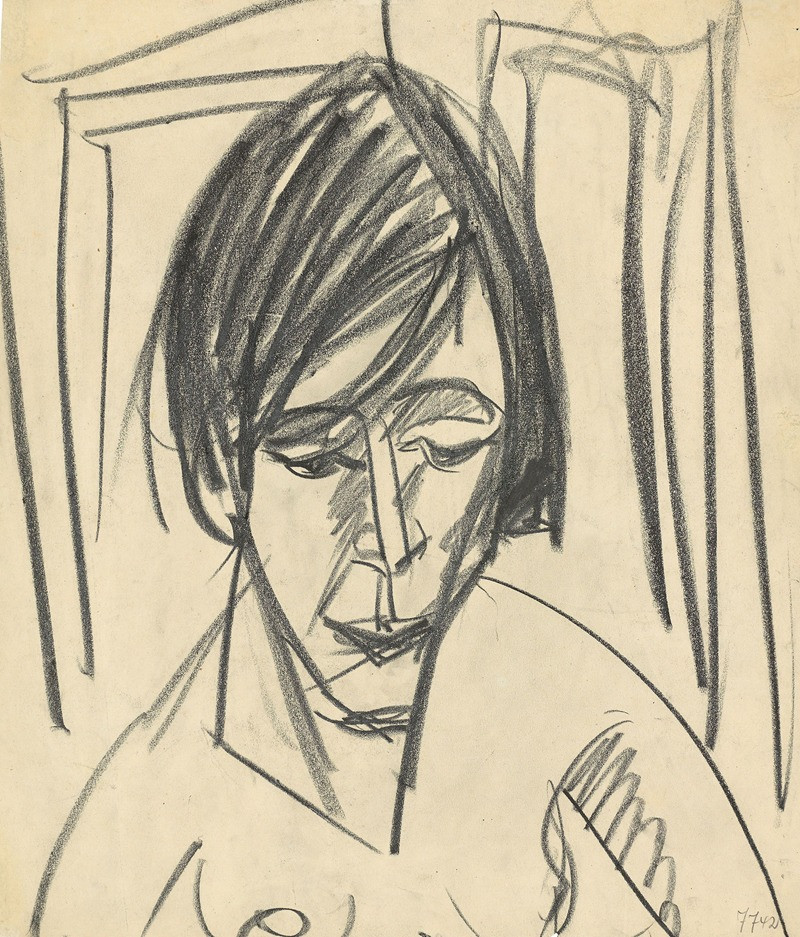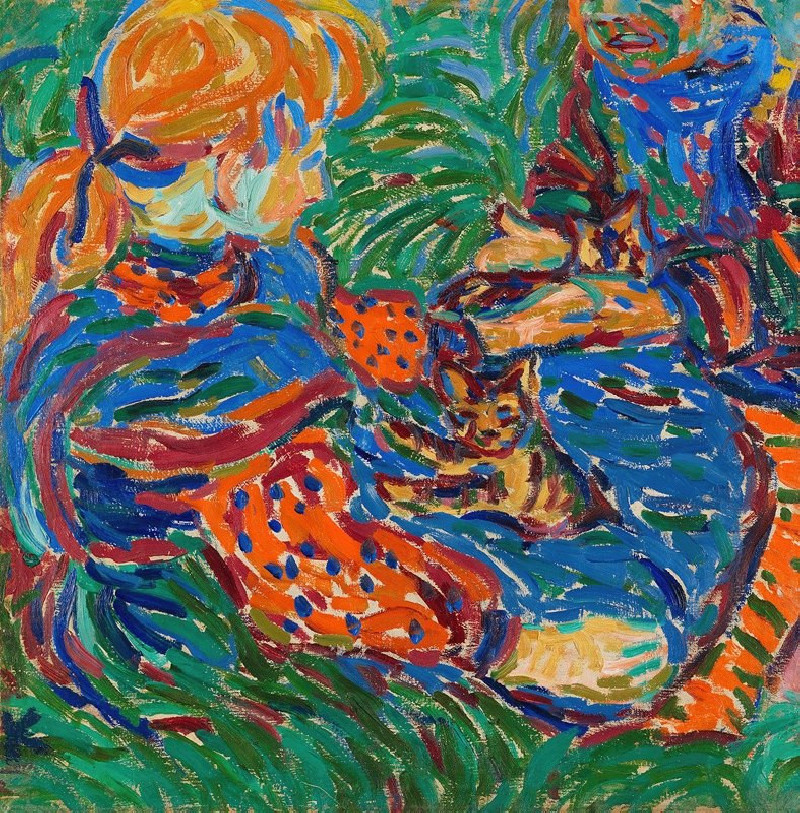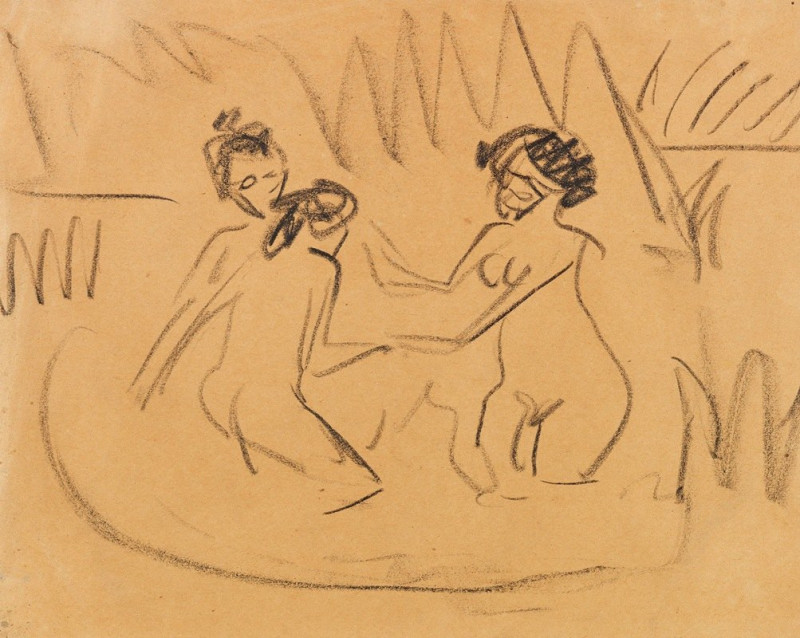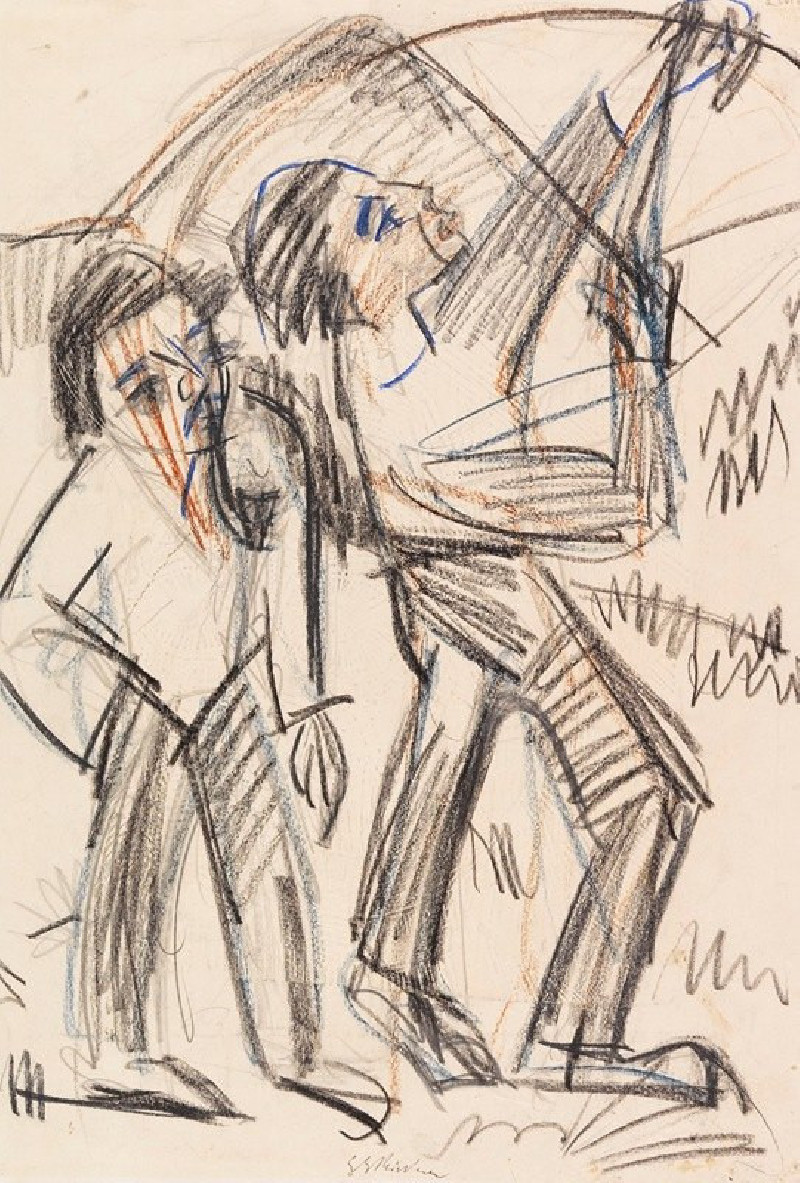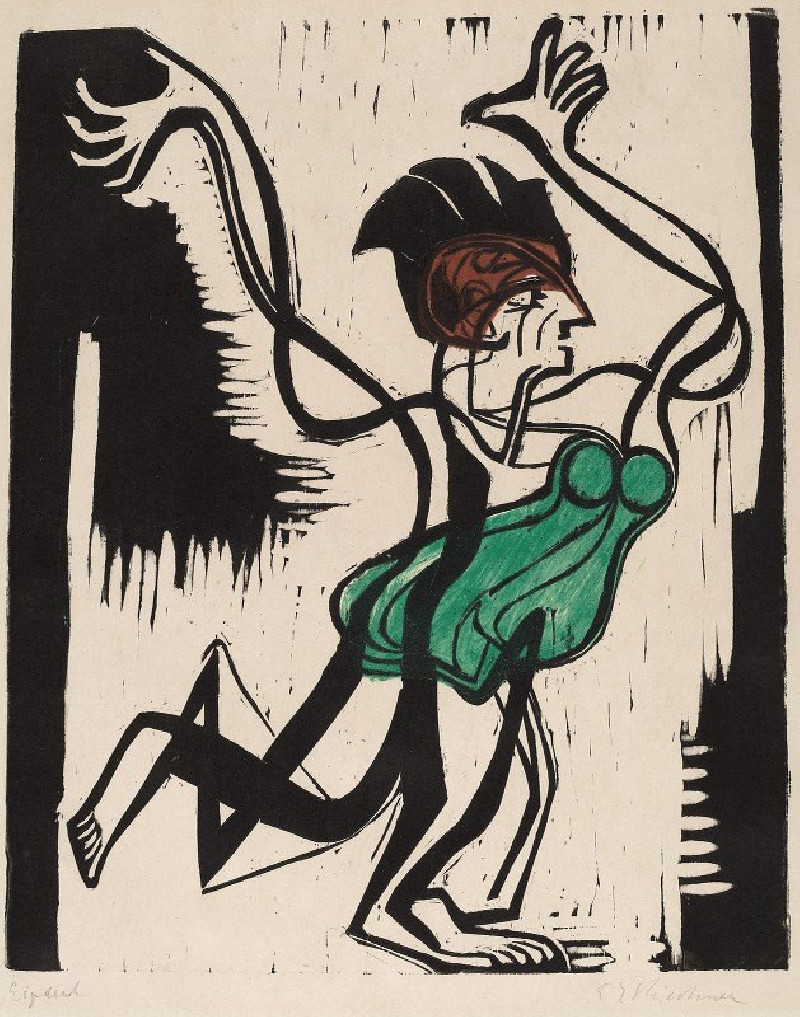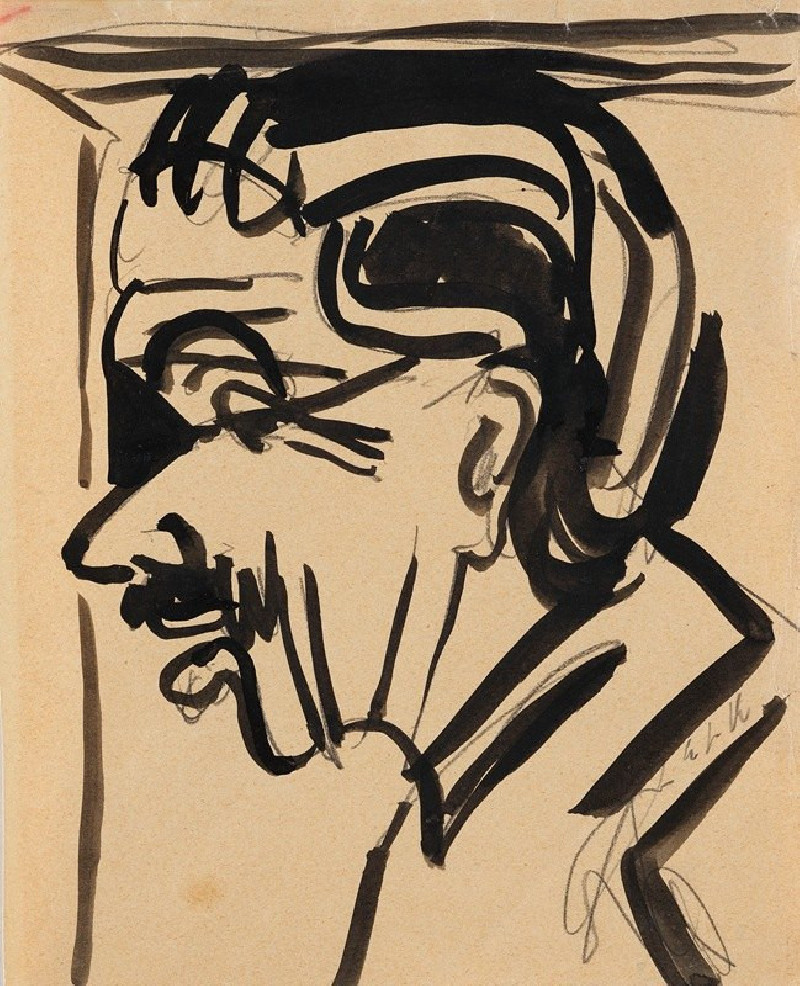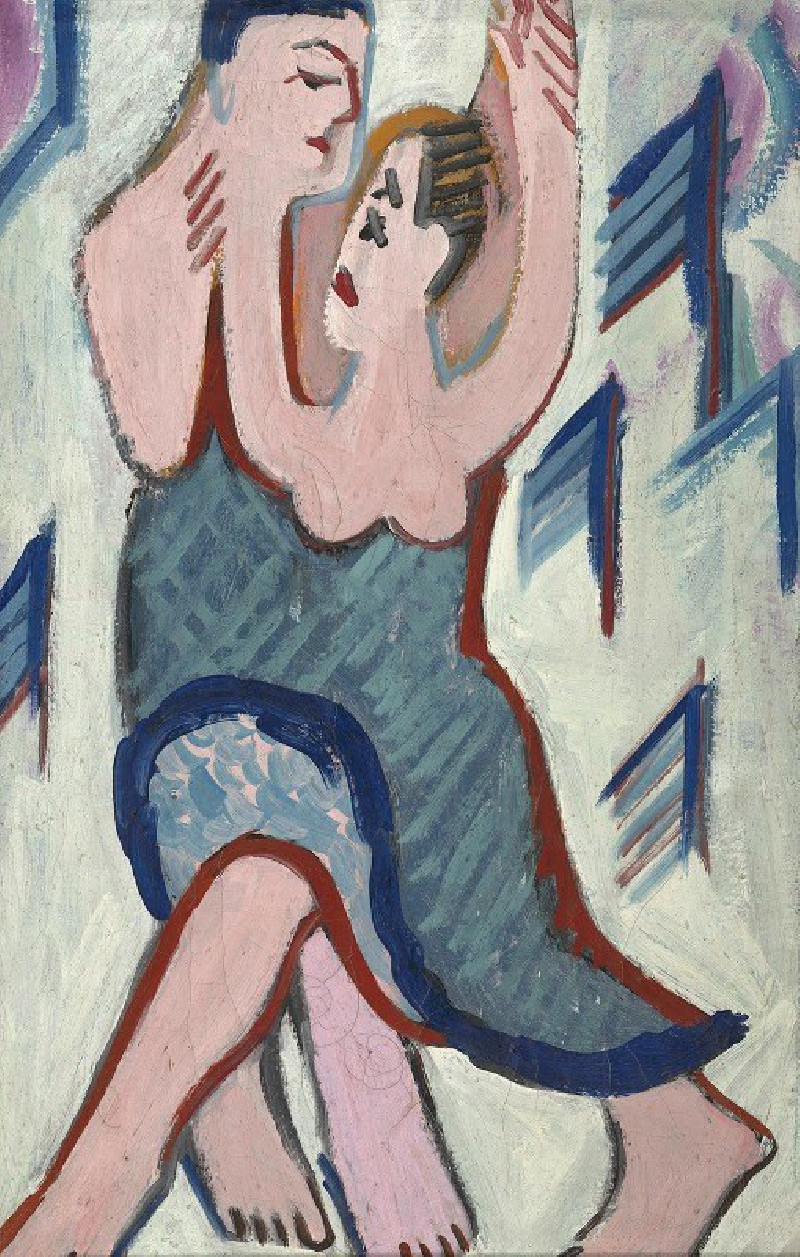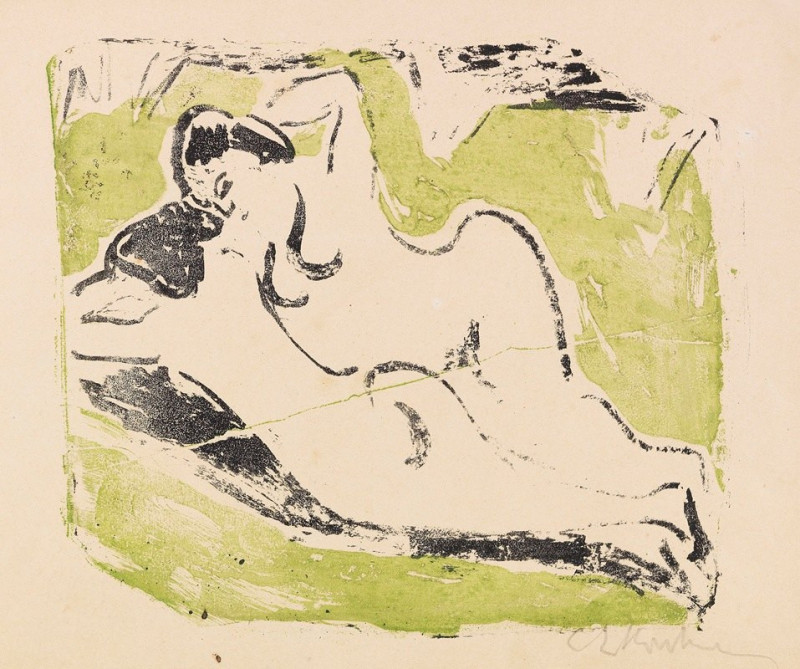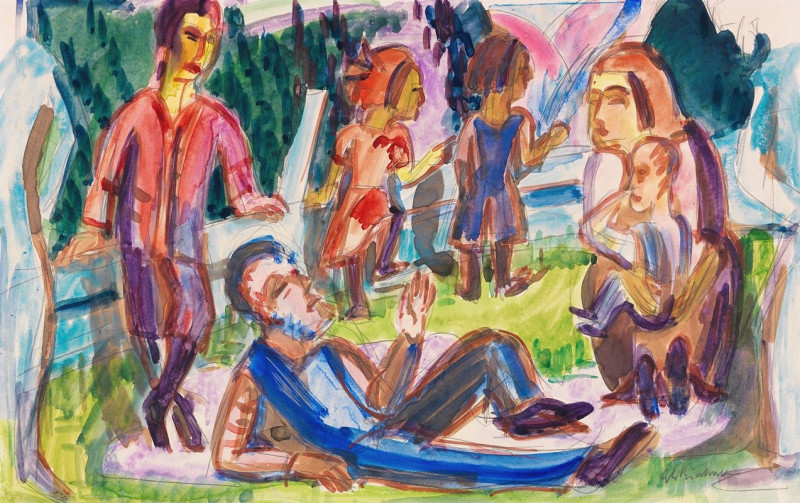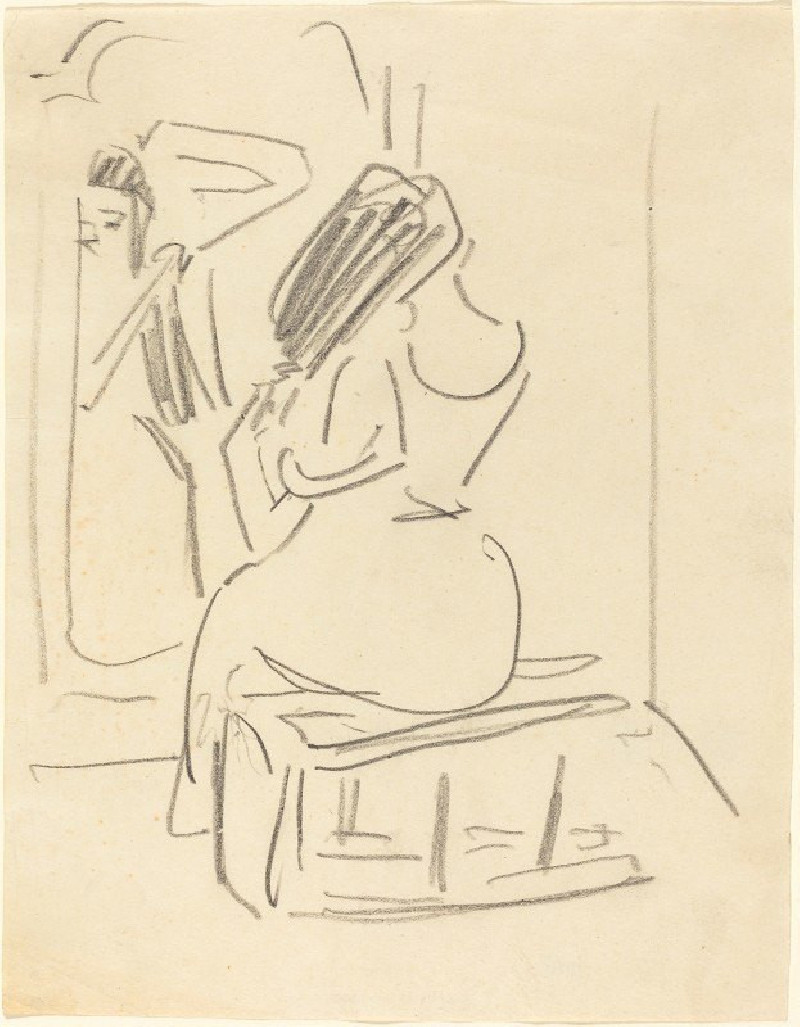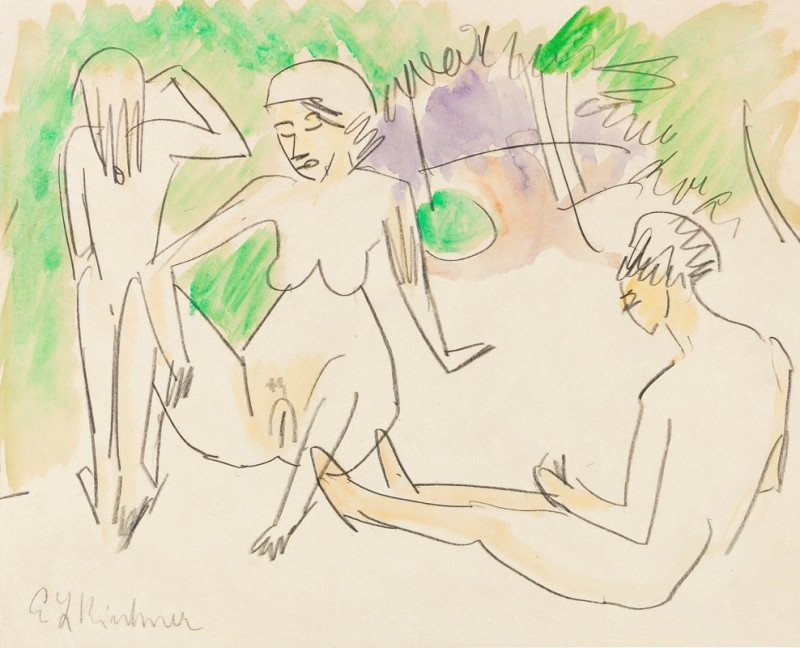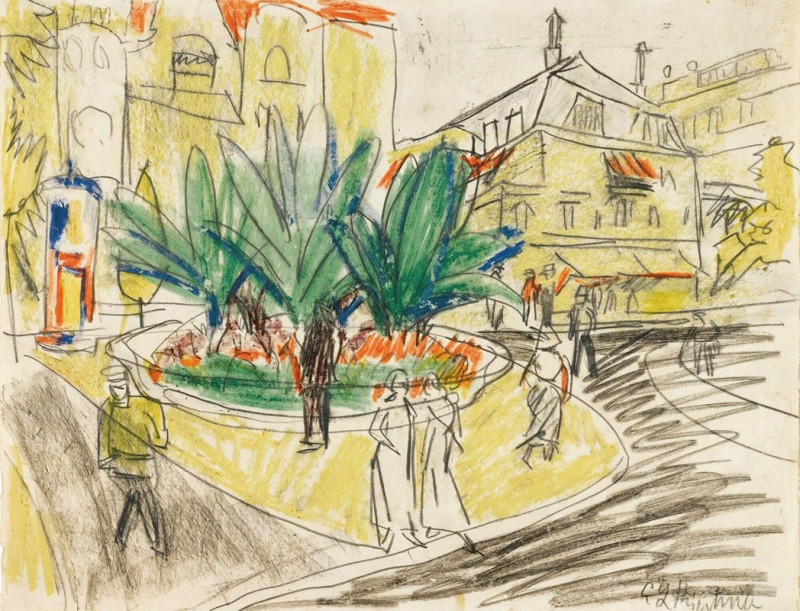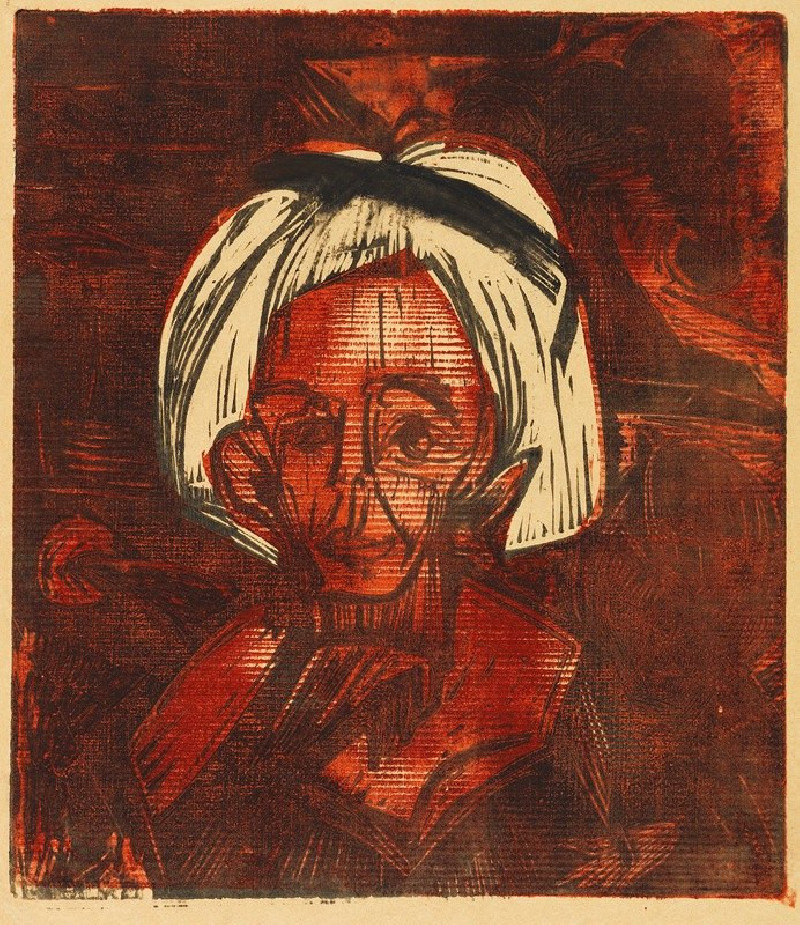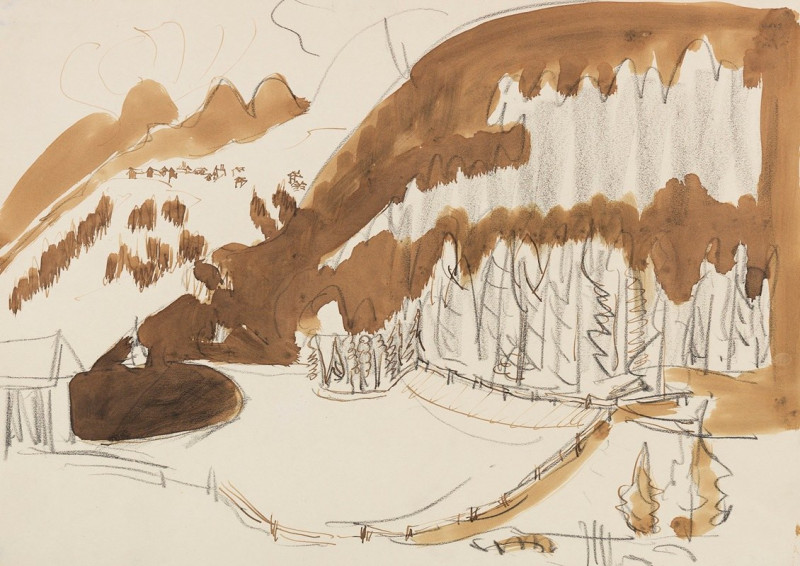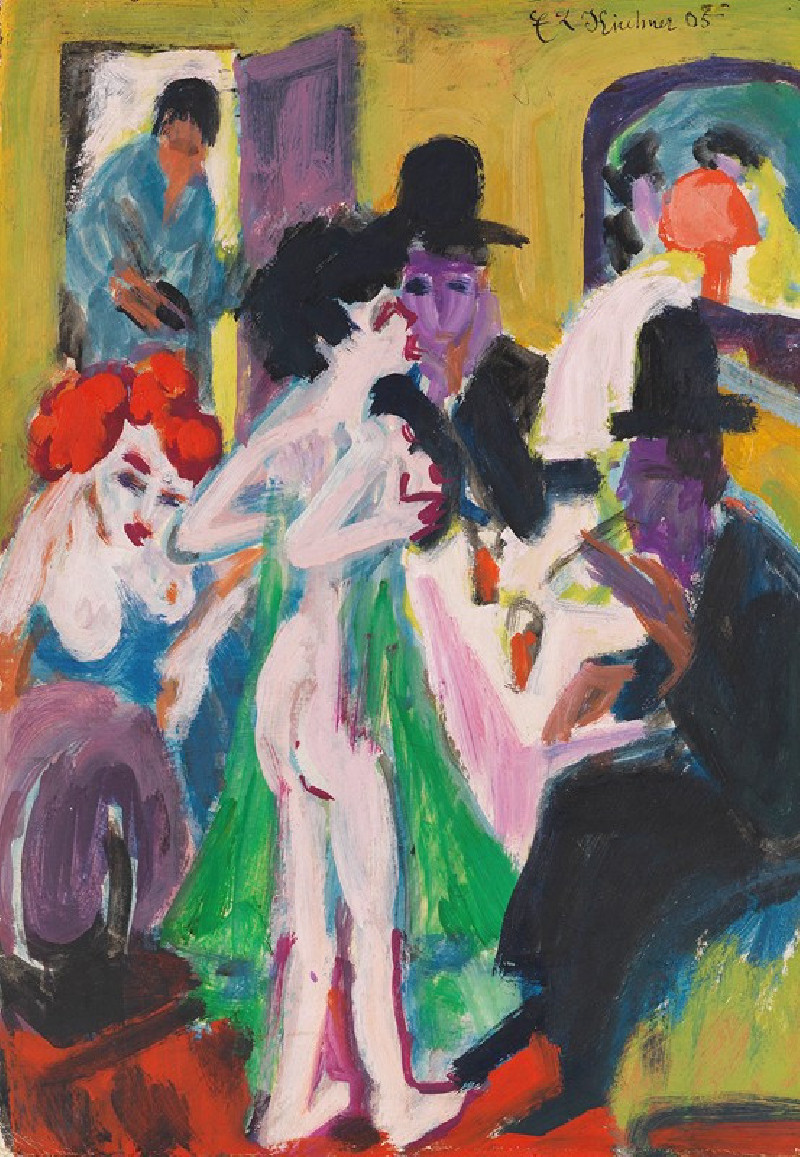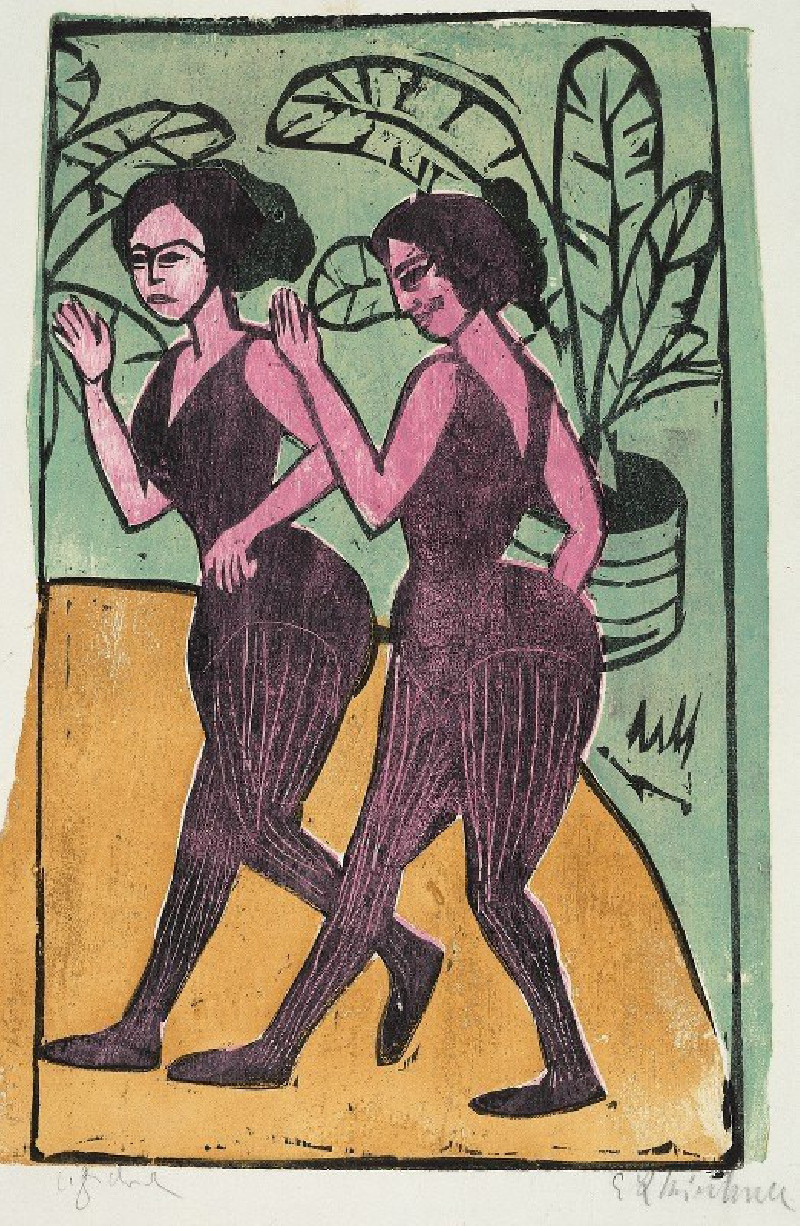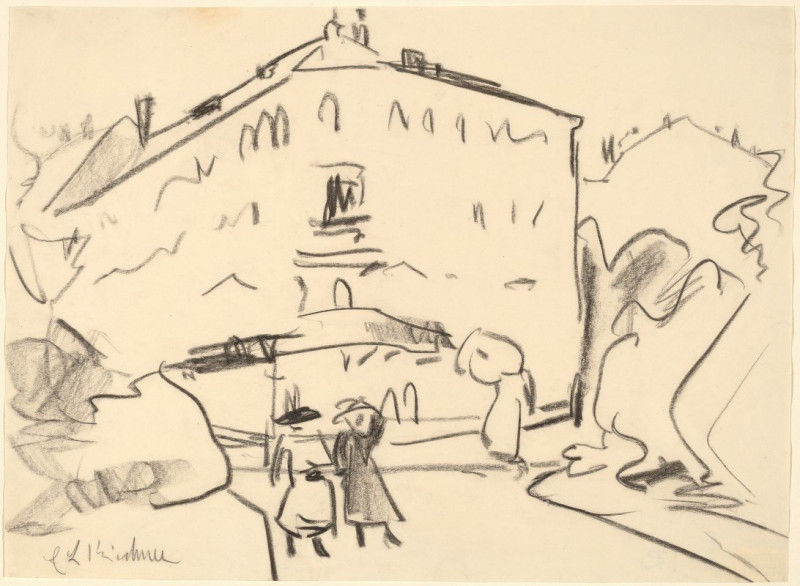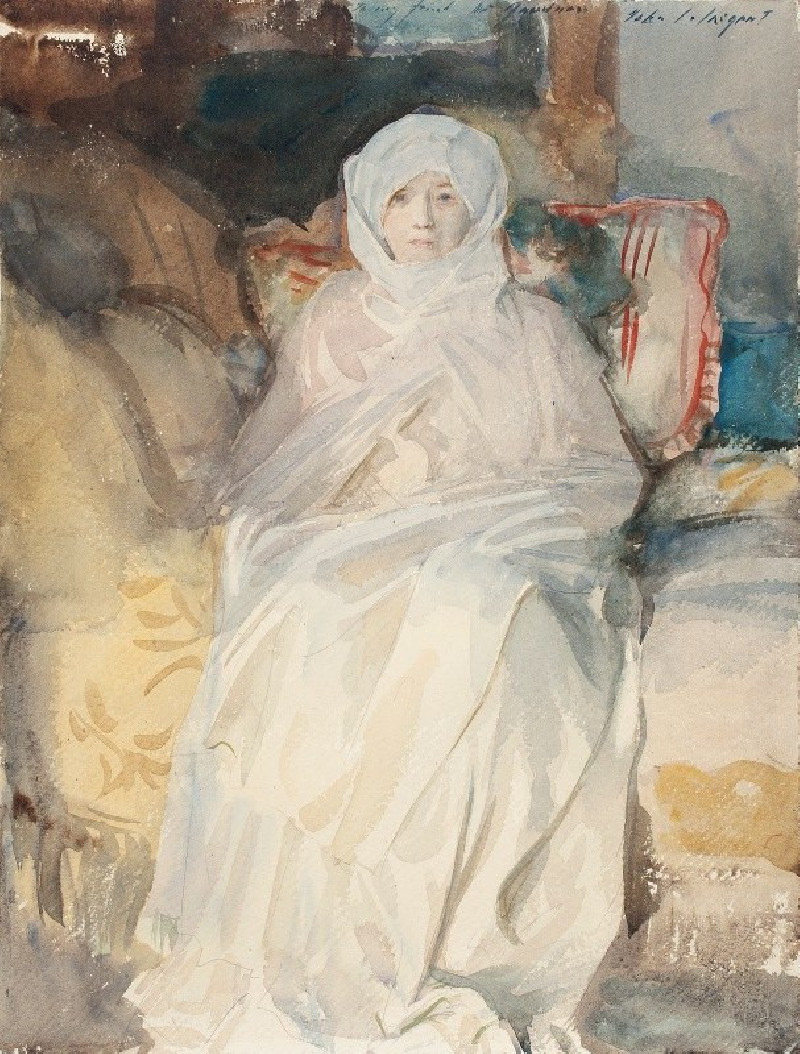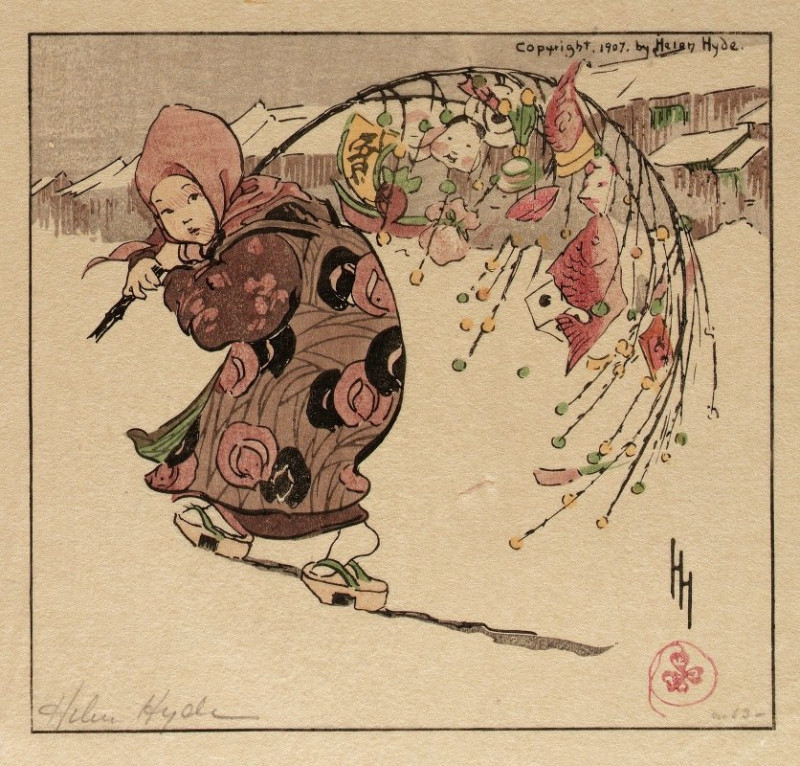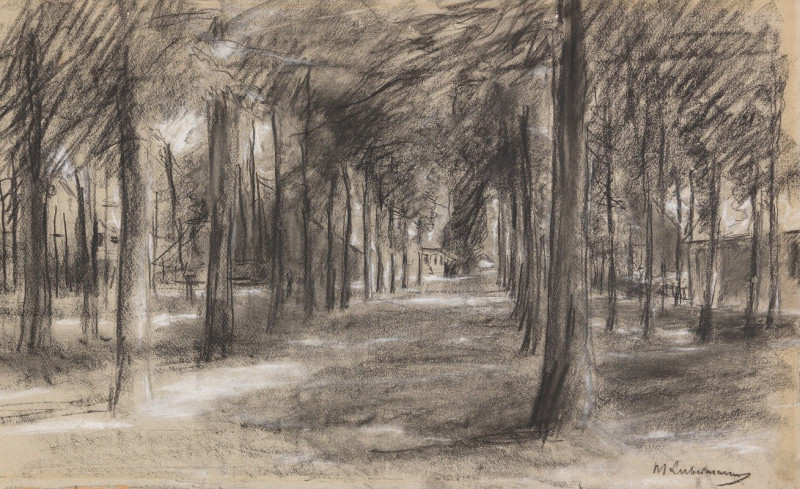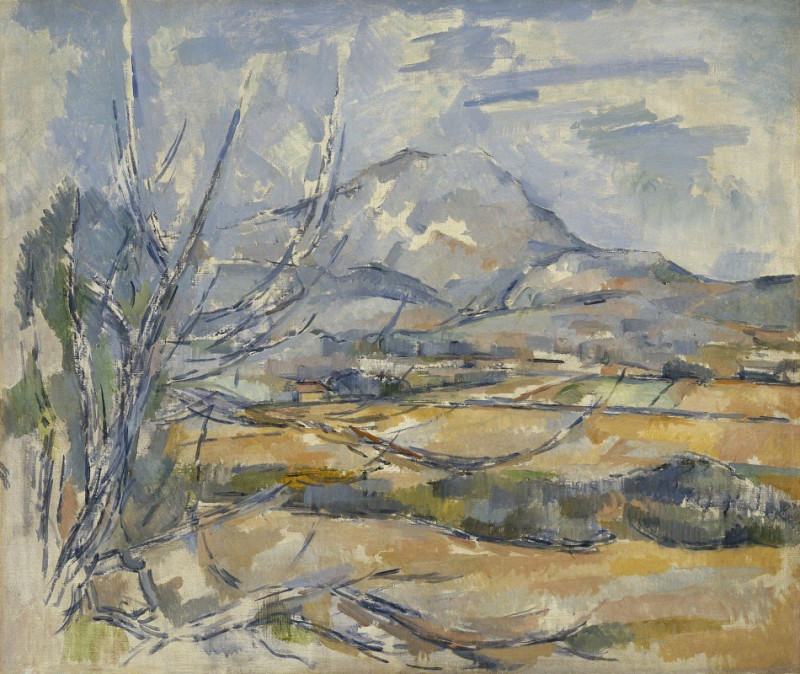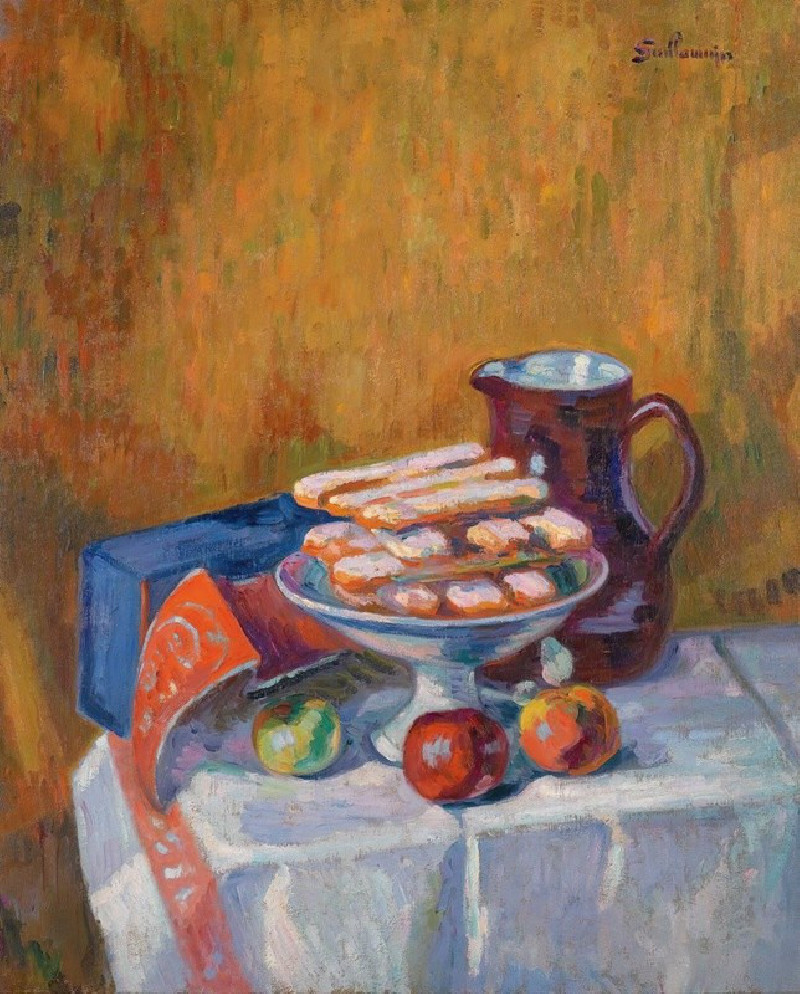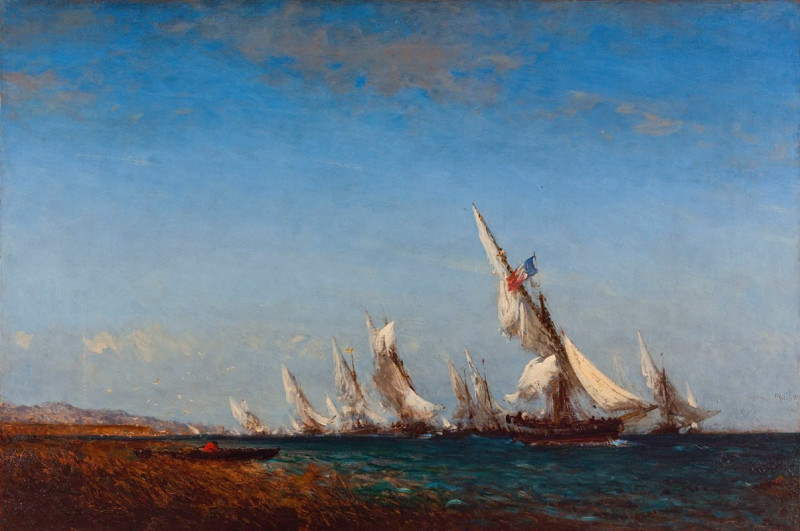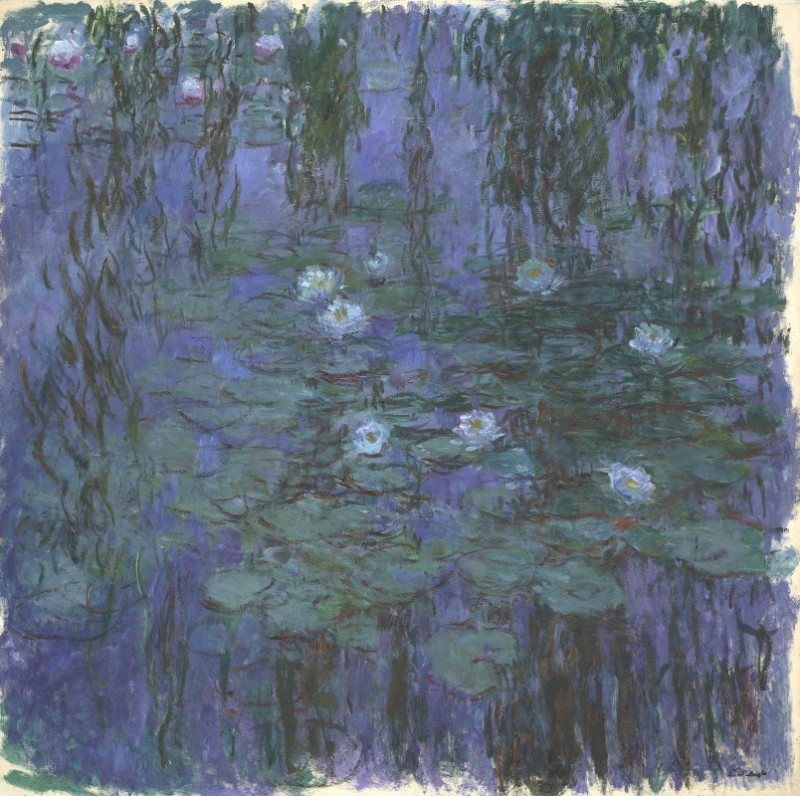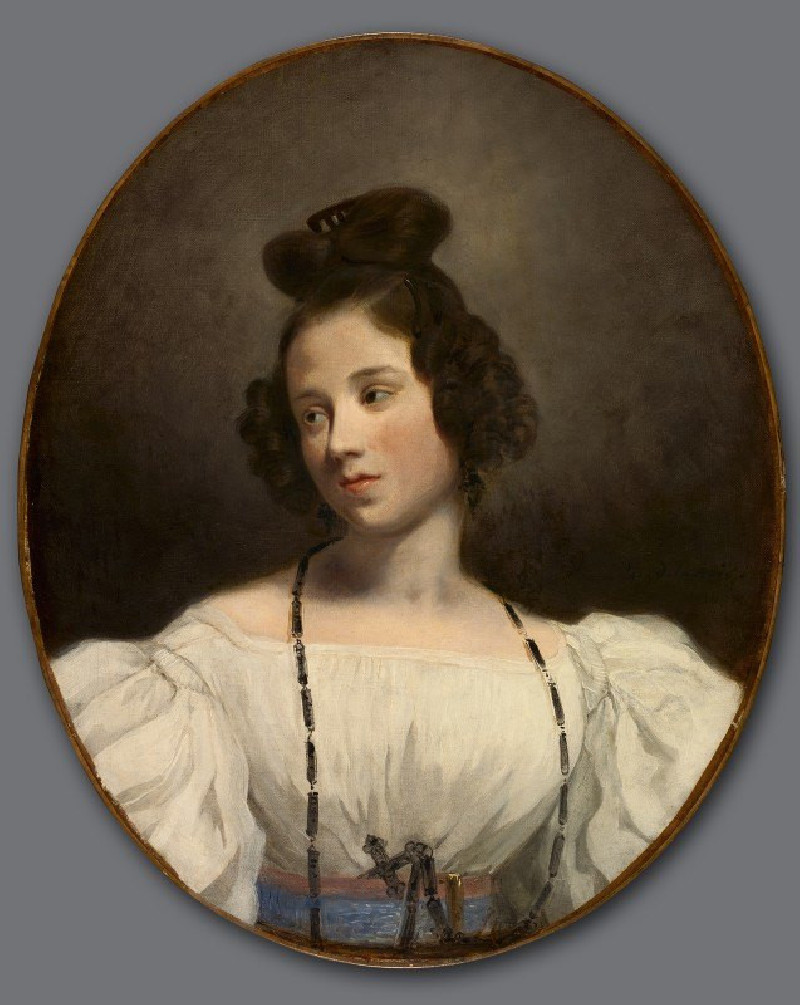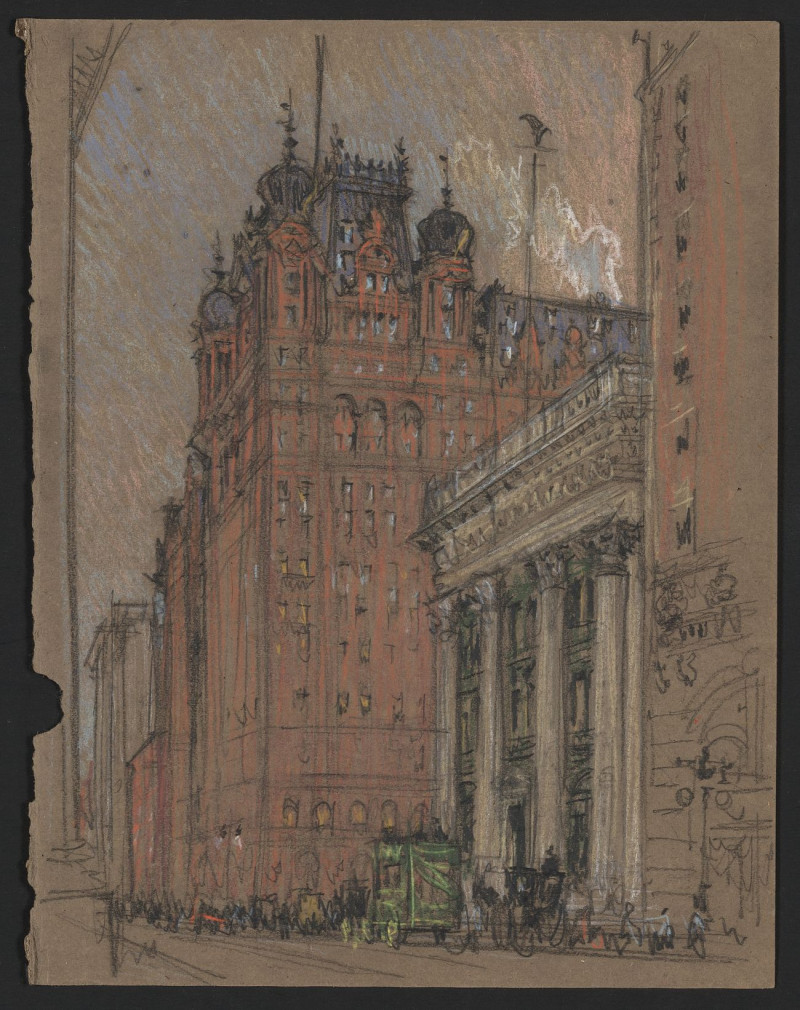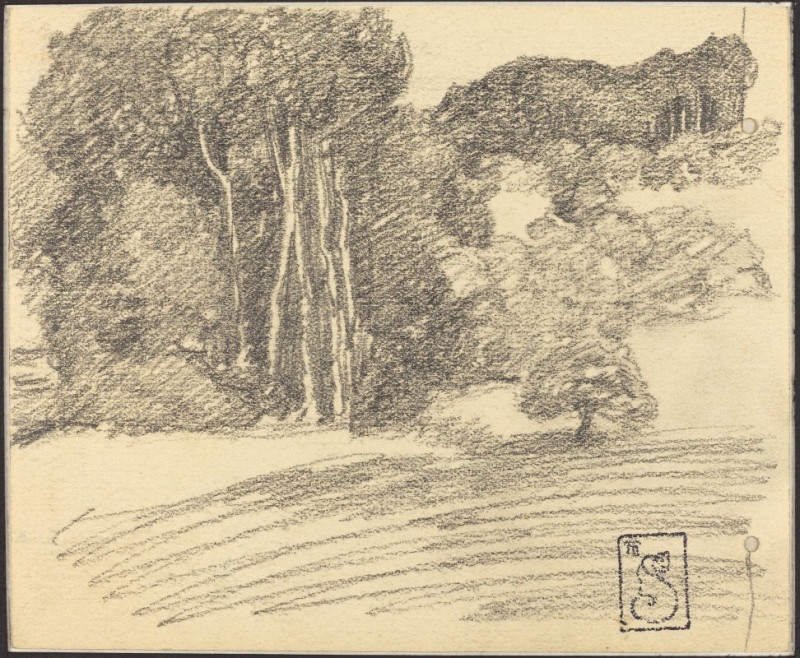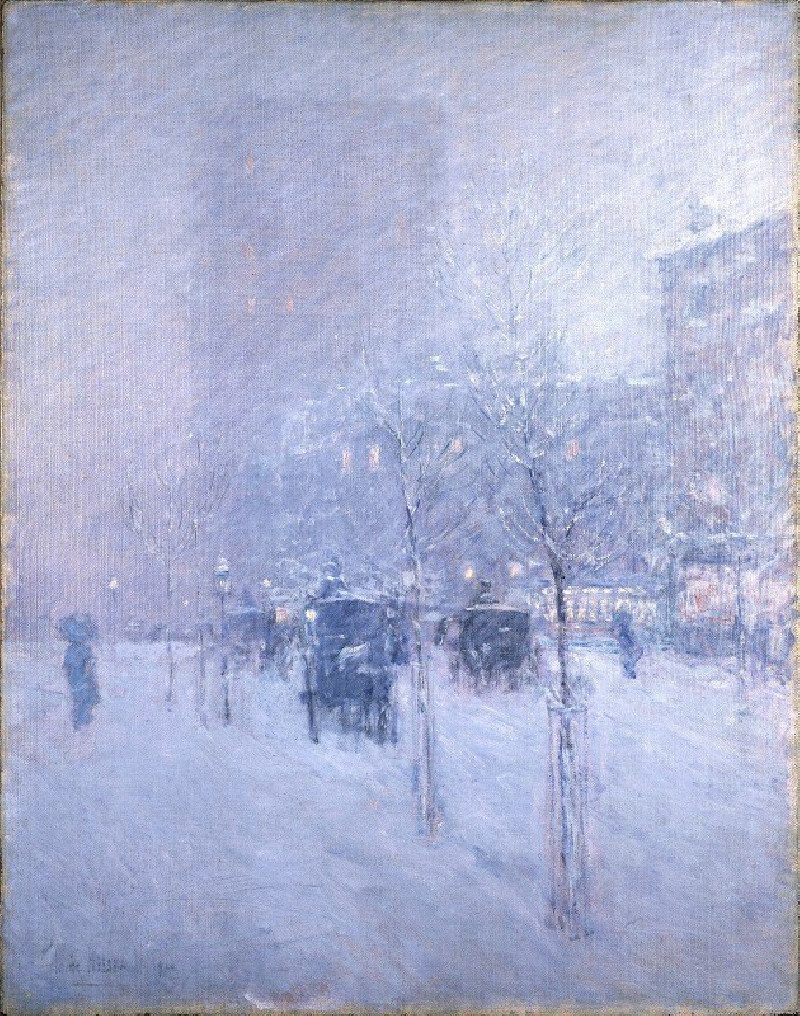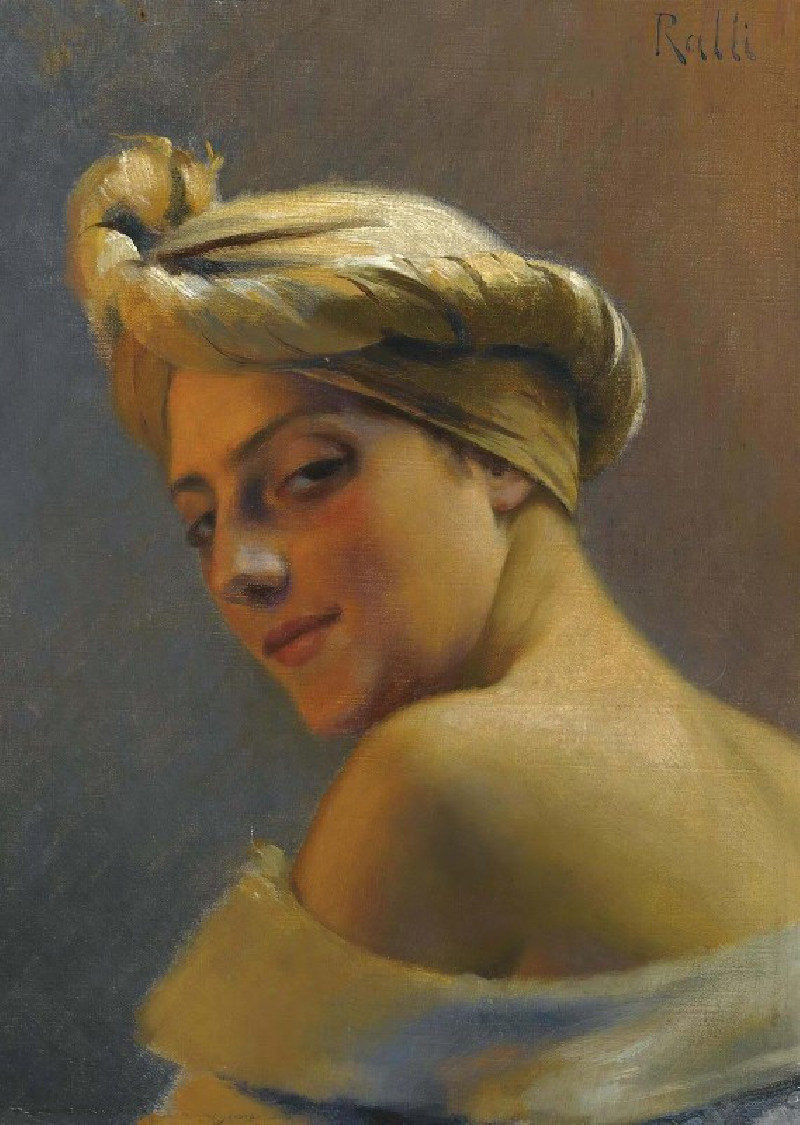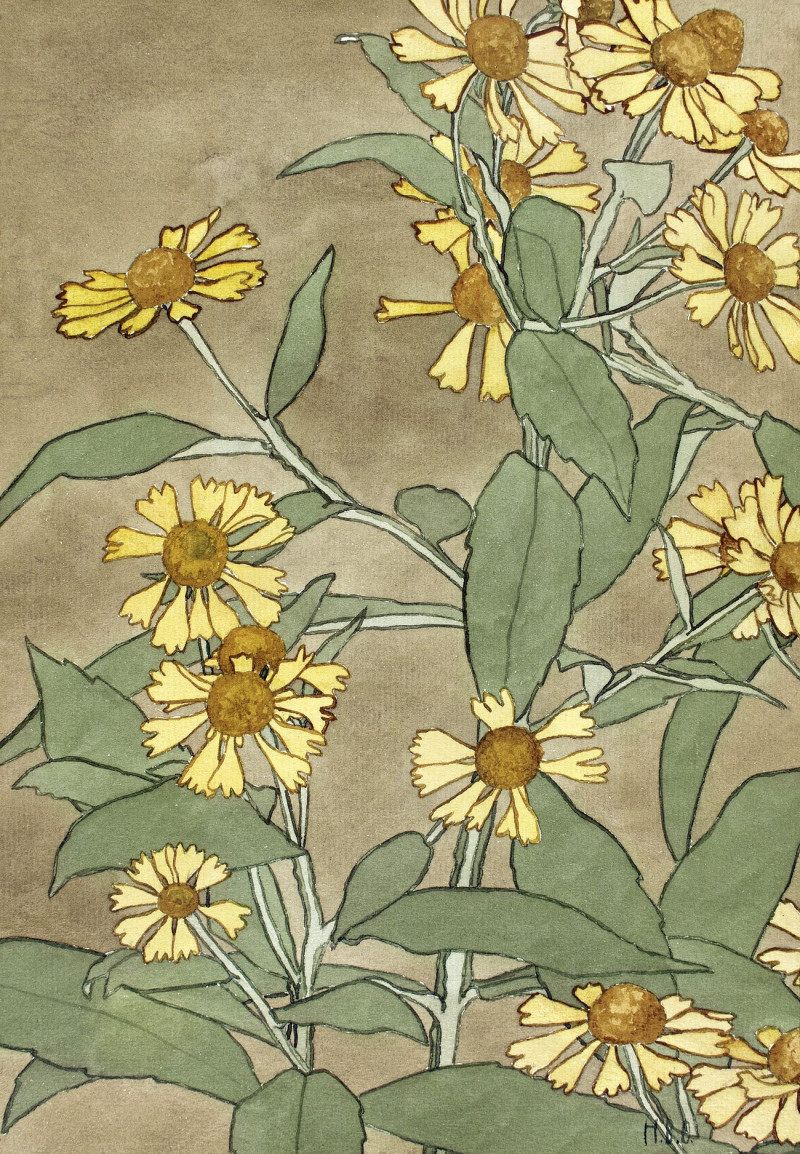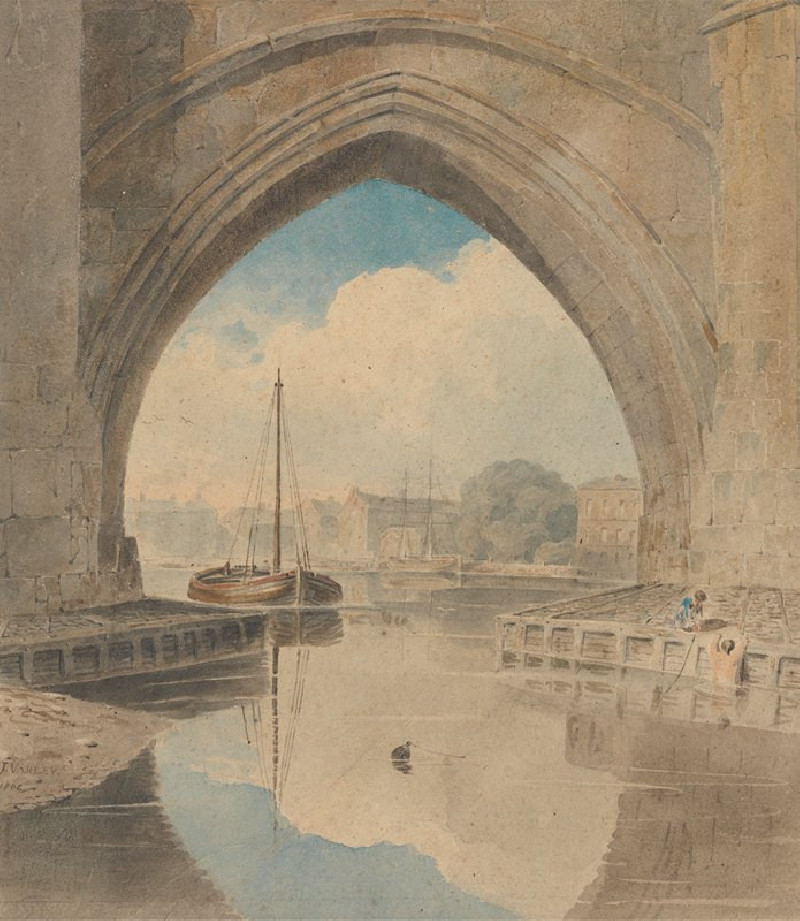The Kiss (1930)
Technique: Giclée quality print
Recommended by our customers
More about this artwork
Ernst Ludwig Kirchner's 1930 artwork, "The Kiss," is a striking example of expressionist art, illuminating the core of human emotion through abstract forms. In this black and white painting, Kirchner plays with bold contours and stark contrasts to depict a deeply intimate scene. Two figures are represented in a dramatic, almost graphic style, with their forms simplified and abstracted into sweeping curves and sharp lines. The larger, dominating form appears to lean over the smaller one, suggesting an act of kissing or an embrace, characterized by a dynamic tension and raw energy that is typical of Kirchner's approach.The background is minimal yet dynamic, with diagonal lines that enhance the sense of movement and emotional depth. Both figures are deconstructed into elemental shapes, with the eye drawn particularly to their circular and moon-like faces, which merge into each other, symbolizing unity and connection.
Delivery
Returns
Ernst Ludwig Kirchner (1880–1938) was one of the most important German Expressionist painters. He was a co-founder of Die Brücke, a group of German expressionist artists formed in Dresden in 1905. Die Brücke and Kirchner took inspiration from Vincent Van Gogh and Edvard Munch, as well as African and Oceanic art. They used woodblock printing as a medium to showcase their signature style: flat, unrealistic images with vivid colors. The recurring themes in Kirchner's artworks included exotic cultures, faraway landscapes, self-portraits, dancers and Berlin street life. His paintings and prints effectively portrayed non-European cultures despite the fact that he never traveled outside of Europe.

